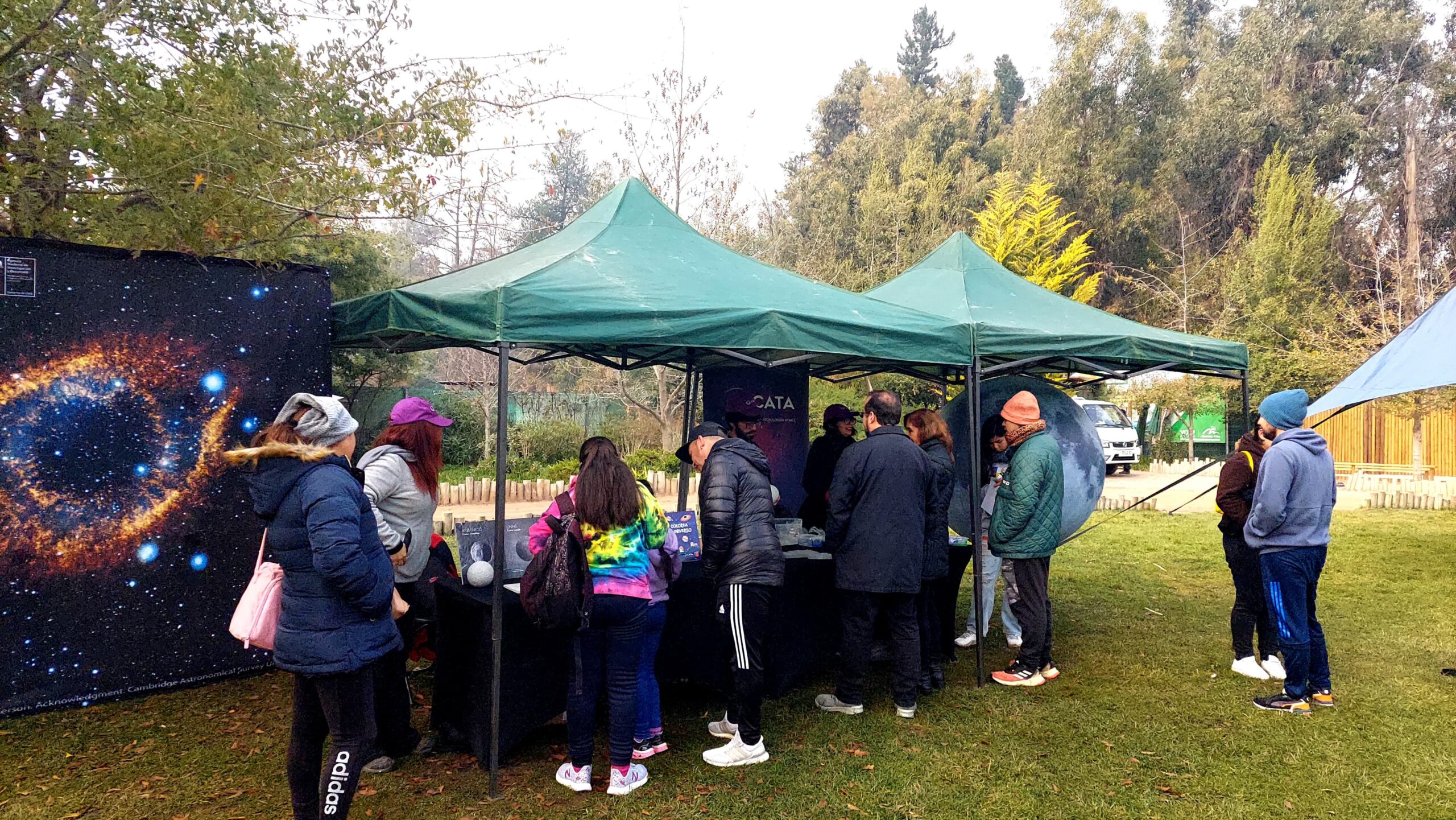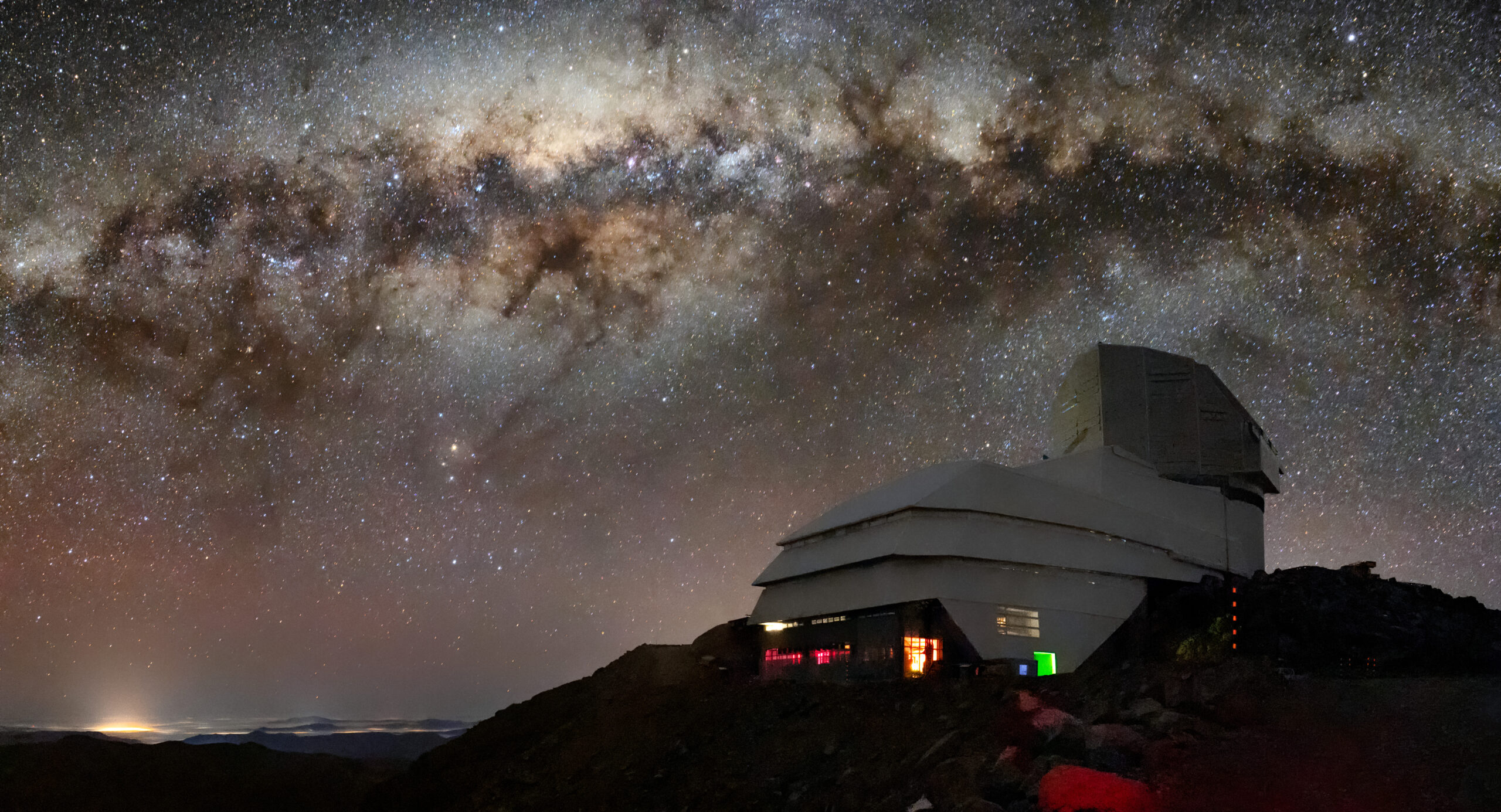
Children approach astronomy from Cerro Calán
During two days, elementary school students from the Colegio Seminario Menor toured the National Astronomical Observatory (OAN) to learn about the various telescopes that are part of the CATA.
One of the objectives of the Outreach area of the Center for Astrophysics and Related Technologies (CATA), which works closely with different astronomical observatories, is to awaken curiosity and interest in discovering the Universe among the youngest children.
And this facet was taken advantage of in two days by the elementary school students of the Colegio Seminario Menor de Las Condes, who went to the National Astronomical Observatory located on Cerro Calán, which depends on the Department of Astronomy of the University of Chile and is part of CATA.
Here the students were first surprised to see two telescopes that are more than 100 years old. One arrived in Chile in 1898, the other in 1913, and remained in operation until the 1970s. Later, they were introduced to a more modern telescope, which was donated by the Japanese people to the OAN.
“They were two visits full of questions and interest from the children and we noticed that what caught their attention the most was when they started visiting the different telescopes. We told them about their history, how this equipment boosted astronomy and laid the foundations of what we have today in research at the national level. They were very impressed by the contrast between having a completely manual telescope, made of bronze, with mechanical parts, and being able to visit a telescope made of much more modern materials and controlled by a computer”, he says. Andrea Mejías, Outreach Coordinator of the National Astronomical Observatory.
CATA is focused on astronomical research and the development of technologies applied to the industry in general. As part of its pedagogical approach, it also offers guided tours that allow participants to explore facilities with history and state-of-the-art equipment, along with attending educational talks given by experts in the field. These visits provide a unique opportunity to learn first-hand about the scientific and technological work that places Chile as a world reference in the field of astronomy.
“At CATA we are committed to the mission of bringing astronomy closer to new generations. For us, the value of bringing this science to children goes beyond sharing knowledge. We are igniting the spark of discovery and curiosity, inspiring young people to explore the cosmos and to consider careers linked to technology and science. In addition, these spaces with the communities help us to foster future collaborations and consolidate our Center as a meeting place of knowledge for all,” he explains. Elise Servajean, Manager general CATA.
Likewise, during their visit, the students appreciated in situ what space observation entails and, in particular, they used a special telescope to look at the Sun, where they observed its flares and spots up close, something impossible to do without the proper equipment.
“For us, these visits are a unique opportunity for students to see space as something accessible and exciting, awakening their curiosity and love for science,” argues Felipe Loyola, Junior Cycle Coordinator at Colegio Seminario Menor de Las Condes.
These initiatives reflect a joint effort between the academic sector and scientific institutions to position Chile not only as a reference in astronomical research, but also as a leader in science education.
“For us it is important that, after the visit, the astonishment, the surprise and the desire to continue asking questions and wanting to continue discovering things remains in them. Maybe no new astronomers will be born from these groups, but the approach to science is always very nice for children, especially because today’s scientists were also children who never lost that spirit of wanting to continue discovering things. We would like them to take with them this message of never losing their curiosity and desire to learn”, concludes Andrea Mejías, OAN Extension Coordinator.
Recent news
-
 Publicado el: 09/07/2025Patricia Tissera is recognized as full professor by the Pontificia Universidad Católica de Chile
Publicado el: 09/07/2025Patricia Tissera is recognized as full professor by the Pontificia Universidad Católica de Chile -
 Publicado el: 04/07/2025CATA researchers among the best in Chile according to international ranking Research.com
Publicado el: 04/07/2025CATA researchers among the best in Chile according to international ranking Research.com -
 Publicado el: 30/06/2025CATA Director strengthens ties in her second institutional tour
Publicado el: 30/06/2025CATA Director strengthens ties in her second institutional tour -
 Publicado el: 30/06/2025CATA celebrated Asteroid Day 2025 at the Pueblito de Las Vizcachas Park
Publicado el: 30/06/2025CATA celebrated Asteroid Day 2025 at the Pueblito de Las Vizcachas Park -
 Publicado el: 26/06/2025Vera C. Rubin: the telescope that watches the sky and anticipates the future of astronomy
Publicado el: 26/06/2025Vera C. Rubin: the telescope that watches the sky and anticipates the future of astronomy
Categories list
- Acknowledgments 20
- Astrobiology 5
- AstroCluster 1
- Black holes 13
- Corporativo 49
- Cosmology 4
- Descubrimientos 19
- Disclosure 46
- Exoplanets 13
- Extension 4
- Galaxies 17
- Galaxies formation 2
- Inter y Transdisciplina 2
- Local Universe 13
- Publications 5
- Sin categorizar 31
- Solar System 11
- Stellar formation 6
- Technology 9
- Technology Transfer 12




